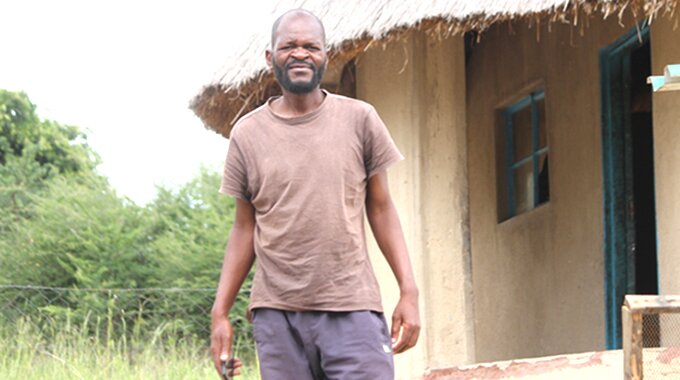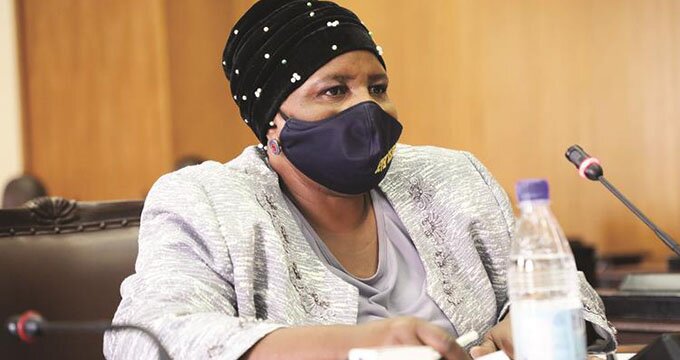CHIPINGE — Smallholder farmers here have started benefiting more from their cattle after acquiring modern cattle management practices that have seen them destocking old bulls and cows as well as excess oxen to remain with a leaner, more efficient and productive number of beasts.
BY PHILLIP CHIDAVAENZI
Norman Deruko of ward 21 in Deruko village under Chief Mapanzure and his wife, Victoria Pencil, were among farmers that struggled to grow their herds for profit as their cattle largely remained unproductive.
“We had 10 cattle between 2013 and 2016, but we now have 25 and we are just about to sell seven,” Pencil said.
“Back then, livestock production was difficult because we did not have knowledge. We just kept the cattle and drove them to the pastures.”
Advertisement
Their fortunes, however, changed for the better after Pencil had a chance encounter with a team from Feed the Future Zimbabwe Livestock Development Programme at Checheche Growth Point in 2016.
“Although we started rearing cattle in 2003, our herd never grew and the highest we reached was 10 in 2015,” Deruko recalled.
“In 2016, my wife met Feed the Future team at Checheche Growth Point and appealed to Musasa to visit our area.”
Alofonce Musasa, the agricultural extension officer for Lower Chipinge, took heed of the call and visited the village, where he taught communal farmers how they could improve their herds and get the best out of them.
“He taught the whole village to practise cattle farming and grow crops such as sun hemp, sorghum and velvet beans for the cattle,” Deruko said.
Musasa revealed how they empowered the farmers with skills to grow and process their own livestock feed because that is part of the programme’s objectives.
“Many people now want to grow livestock feeds. When we see villagers doing so well like this, we can go and drink to our heart’s content,” he chuckled.
Pencil noted that implementing proper management practices had seen their cattle become so productive that they were able to use them even for personal development.
After pocketing a profit of $16 000 they were able to renovate their ramshackle homestead while Pencil, who had prematurely ended her schooling after Form 3, went back to the desk and wrote her Ordinary Level examinations.
“The relics of my old kitchen are still here and serve as a reminder of where I came from,” Deruko said with pride.
“In 2016, my wife went back to Form 3 and wrote her O-Levels the following year. Without this project, all that would not have been possible.”
Deruko highlighted that they had also ventured into growing feeder crops and sold velvet bean seeds — some to World Vision — and raised enough money to do renovations to their homestead.
“We harvested two tonnes of velvet beans and fed some to our cattle and sold off 750kg,” he said.
“Hay takes longer to harvest, especially during the rainy season, but you can keep velvet bean seed for five years in adequate amounts to feed cattle during drought seasons.”
Advertisement
Pencil, who is also the programme’s lead farmer here, said they learnt that without sufficient stockfeeds, their cows would not go on heat and, consequently, they did not get calves often — maybe just one in two years.
But things have improved for the better after they were taught to prepare low-cost, but nutritious feeds for the cattle, courtesy of the programme.
“We were taught the importance of increasing our female heads and using bulls for commercial purposes and ensure we were able to pay fees, buy food and develop our homesteads,” she observed.
“We started feeding our cattle with velvet beans and calving has increased so much that the cattle have been giving us calves almost every year.”
In Kubatana village, ward 16, Angeline Garwe experienced a similar fate to that of Pencil, constantly recording huge cattle loses. Her cattle never exceeded 10.
But since joining the programme and implementing the recommendations, she has grown her herd to 27 between 2015 and 2019.
“Chipinge West used to be known for livestock deaths due to hunger, but since this programme came, we have not lost any cattle,” she noted.
As part of their homestead development, Deruko and Pencil sunk a borehole and their cattle now have sufficient water, which experts say helps with easy breeding.
Pencil indicated they had also built a feedlot, which they use to fatten cows for the market. As the herd increases, more cattle are set aside for sale and the money would be used to further develop the homestead and meet other household needs.
“Currently, we have 14 cattle in the feedlot, which we want to sell so that we can raise money to purchase a solar system,” she said.
Advertisement
Feed the Future Zimbabwe communications specialist Emelda Takaona underscored that the feedlots were designed in such a way that they would confine the cattle as they are fattened to improve their quality for the market.
“During this time (in the feedlot), which is 40 days, the cattle get primary healthcare. They are vaccinated, get food rations and have their weight measured. The idea is to increase their weight by almost a kilogramme every day,” she said.
Before the programme was introduced in Chipinge, many young men would jump the border into Mozambique in search for jobs and opportunities, but that was a risky enterprise which the programme has helped circumvent.
“Now because there is work to do, our children no longer stray into Mozambique where some have been shot with guns. Now they are part of the cattle business,” Pencil said.
According to the eastern region Feed the Future Zimbabwe provincial supervisor, Clephas Chikanda, they helped to connect farmers under the programme with the markets.
“We use the village aggregation approach, where the lead farmer mobilises people and get a commission from the abattoirs. It’s like a job. They get the commission even if they have cattle on the lot,” he said.
“Some buy motorcycles and fuel so that they are easily able to connect with cattle owners in different villages.”
Besides the market linkages, Chikanda said another critical component was the financiers who provided the farmers with cheap loans to boost their cattle projects.
Farmers here said before the advent of the programme, they used to lose a lot of cattle to rustlers, with extension officer Musasa saying cattle were “stolen like chickens here and are usually taken across the border”.
But the introduction of branding as part of the programme has significantly reduced the rustling incidences, as stolen cattle could now be easily identified and taken back to their owners.
Takaona indicated that they were training farmers to tag their cattle as part of good livestock management practices.
“Some cattle are found and traced back to the owners if the tag contains owner details for identification. It could be a phone number or name,” she said.
Another beneficiary of the programme, Elias Chauke, said cattle branding had hedged local farms against significant losses.
“When a cow is returned, the branding enables us to identify the owner because it has a PIN (personal identification number) and information about the district, which makes it easy to identify the owner,” he said, adding that stock thefts were now rare because of the branding, usually done on the beast’s ear.
The tag is attached using an applicator, so the only way one could remove it was by tearing off the ear. A torn ear would raise suspicion to a potential buyer.
The programme’s herd rationalisation model has allowed smallholder farmers to naturally increase their herds annually through their productive asset ownership, enabling them to dispose of their cattle profitably whenever need arose.
The current cycle of the Feed the Future programme — which commenced in June 2015 in Chipinge, Chirumhanzu, Gokwe South, Gweru, Kwekwe and Umzingwane to provide technical assistance to reduce poverty and increase food security among 1 800 beef and 1 200 dairy smallholder farmers — is expected to end in June this year.
According to Sithole, even when the cycle ends, they are now self-sufficient.
“The knowledge and information they gave us is enough wealth,” she said. “Even if they go now, I can continue managing my cattle well.”
– NEWSDAY








